
Is it possible for budding entrepreneurs to use Etsy as a lucrative side hustle idea without necessarily aligning with every craft trend or mastering sophisticated artistic skills? Our comprehensive guide is here to unravel the intricacies of Etsy selling, transforming it into a fruitful source of income.
Etsy is an ecommerce platform dedicated to the buying and selling of handmade goods, vintage items, and craft supplies. It's a global marketplace that connects artisans, craft enthusiasts, and customers who value originality and craftsmanship. From selling jewelry to rare vintage collectibles, Etsy forms the stage where creativity encounters commerce, fostering an Etsy community passionate about authenticity and uniqueness.
As Etsy continues to expand, you might wonder: do you need to follow every trend or master complex designs to make a mark? Over time, two important changes have happened. Firstly, Etsy sellers have started exploring a wider range of creative ideas, going beyond the usual. Secondly, Etsy has grown into a platform that welcomes businesses of all sizes and types.
So, what does the journey look like for a small business selling on Etsy? Do you need to be a highly skilled craftsperson? Are you curious about running a successful Etsy shop? Our guide is here to answer all these questions and more. This article aims to make it easier to understand how to sell on Etsy in a straightforward, easy-to-understand way.
Settle in, ready yourself for some insightful revelations, and—if you're up for it—let your creativity wander through the diverse creations we'll explore.
Don't have an online store yet? Try Shoplazza for free and create your store today!
Is selling on Etsy worth it?
When contemplating whether to take the leap and start selling on Etsy, perhaps even considering starting a clothing brand, it's common to ponder the question: is it worth it? As an online platform with millions of buyers who are specifically interested in the unique, handcrafted, and vintage items that sellers offer, Etsy has the potential to connect shop owners with a global audience they might not have access to otherwise. However, as with any business venture, there are pros and cons to consider. Let's delve into the advantages and disadvantages of setting up a shop on Etsy.
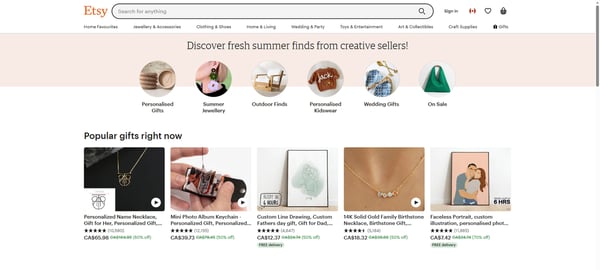
Pros of selling on Etsy:
- Reach and visibility: Etsy's expansive global network pulls in millions of visitors each month, providing substantial exposure for your Etsy storefront. This level of visibility can be particularly advantageous for small business owners who may find it challenging to draw such significant traffic to their successful Etsy shops.
- Ease of use: Setting up an Etsy shop is straightforward. The platform guides you through the process of creating your shop page, uploading your Etsy listings, and setting up your payment methods. This user-friendly approach is great for new sellers who are not tech-savvy.
- Trust and security: Being part of a well-known platform like Etsy can build customer trust. Buyers are often more comfortable purchasing from a familiar platform, knowing that there are systems in place for dispute resolution and payment security.
- Built-in SEO: Etsy has strong search engine optimization (SEO), making it easier for your products to appear in online search results. This could lead to increased online sales without you having to become an SEO expert.
- Payment method: Etsy's extensive payment options cater to diverse customer preferences, potentially expanding your customer base. Whether through credit cards, debit cards, Etsy Gift Cards, Etsy Credits, certain bank transfer services, PayPal, or Google Pay, Etsy simplifies the payment process for both sellers and buyers. Additionally, Etsy handles payment processing, taking care of payment security and infrastructure. The associated payment processing fee is a small trade-off for this convenience, saving sellers from the complex task of setting up individual payment processing systems. This streamlined approach allows Etsy sellers to focus more on selling their unique items on Etsy successfully.
Cons of selling on Etsy:
- Fees: While Etsy provides access to a vast customer base, it does come at a cost. As mentioned earlier, the platform charges listing and transaction fees, along with payment processing fees if you use Etsy Payments. Over time, these Etsy charges can add up, impacting your bottom line.
- Competition: Etsy's popularity means that there are a lot of sellers on the platform, which can make it challenging to stand out. You'll need to work on differentiating your shop and products to succeed in this crowded marketplace.
- Limited customization: Etsy shops follow a standard layout. While this helps maintain a consistent branding and feel across the platform, it does limit your ability to fully customize your shop to match your brand.
- Less control: When you sell on Etsy, you're subject to their rules and policies, which can change. This can create uncertainty, as changes may not always align with your business model.
Deciding whether selling on Etsy is worth it largely depends on your business goals, resources, and products. While the platform can offer excellent visibility and ease of use, it's important to weigh these benefits against the potential drawbacks like fees, competition, and less control over your store. By understanding these pros and cons, you can make an informed decision on whether to start your journey as an Etsy shop owner.
How to sell on Etsy
If you've ever dreamed of turning your creative passion into a profitable venture, selling on Etsy can be a fantastic way to do it. Whether you're an artisan selling handmade items, or vintage items, or a small business owner offering craft supplies, Etsy provides a global marketplace for you to reach like-minded customers. So, how can you, as a potential Etsy seller, set up your shop and start selling on this platform? Let's dive into the steps you need to take to open your Etsy shop.
1. Signing up on Etsy
Begin your Etsy journey by creating an account. Visit the Etsy homepage, click on the 'Register' button, and provide the necessary details, including a unique username and a valid email address.

2. Setting up your Etsy shop
Once your account is ready, it's time to set up your shop. Click on 'Sell on Etsy' on Etsy's site, then click 'Open Your Etsy Shop'. Choose your shop language, country, and currency preferences. Select a unique, memorable shop name that resonates with your brand.
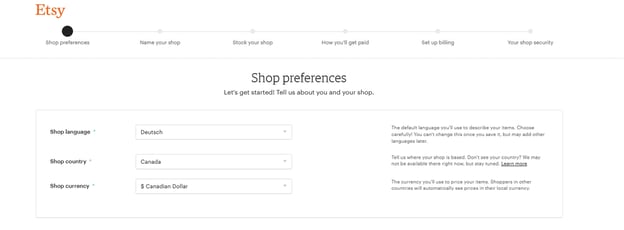
3. Adding product images/videos
Now you're ready to start listing your products. High-quality images are crucial as they are your customer's first impression of your product. Upload well-lit, clear pictures that showcase your product from multiple angles. Etsy also supports video uploads, which can provide a more comprehensive view of your product, enhancing your listing's appeal.
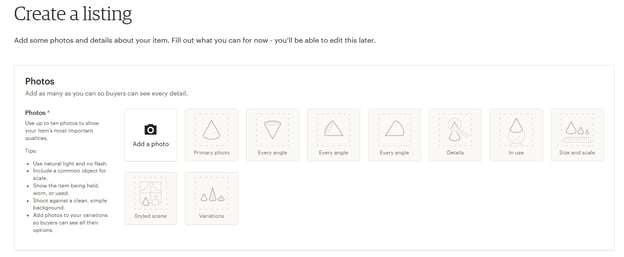
4. Adding listing information
Here, you'll provide a detailed description of your product. Be honest and comprehensive, describing the item's features, materials used, dimensions, etc. Select the appropriate categories and tags to make your item easy to find for potential buyers.

5. Inventory and pricing
Next, set your inventory quantities and price for each item. Consider the cost of materials, your time, and Etsy's fees when setting your price. Make sure to specify the quantity of the item you have in stock.

6. Delivery
Choose a shipping strategy that works best for your business. You'll need to decide whether you'll offer international shipping, what carrier you'll use (like USPS, Purolator, etc.), and how you'll price shipping.
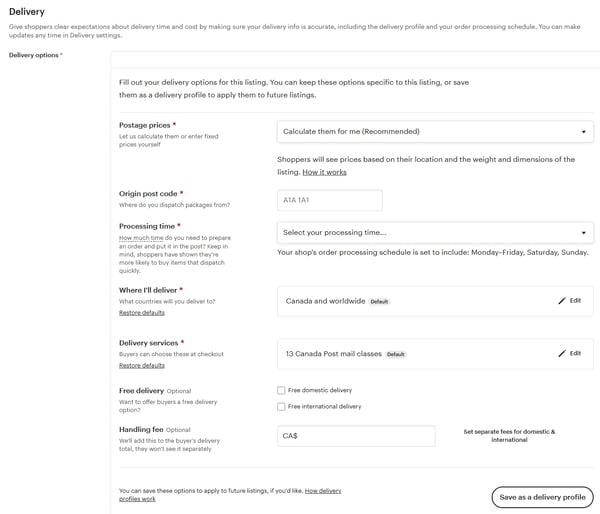
7. Banking information
Finally, to get paid, you need to set up Etsy Payments. Provide your bank account details for direct deposits. Do not forget to review Etsy's transaction fees and payment processing fees associated with this service.
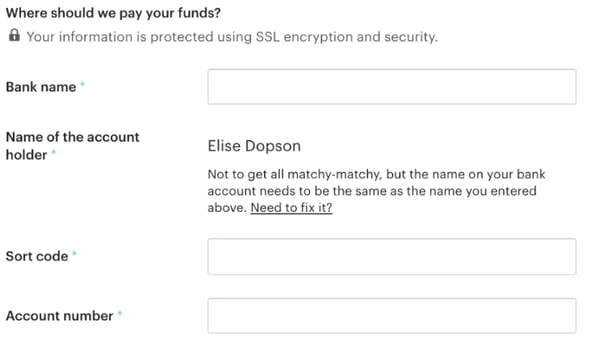
Congratulations! You've successfully set up your Etsy store. The next phase is shop promotion. Utilize Etsy Ads, social media, and other marketing strategies to attract customers to your shop. Keep in mind that running a successful Etsy shop requires continuous effort in managing orders, providing excellent customer service, and regularly updating your listings. Happy selling on Etsy!
The cost to sell on Etsy
Understanding the cost structure is a crucial aspect when you're figuring out how to sell on Etsy. As an Etsy seller, it's important to understand that, while opening an Etsy shop is free, there are several fees that you need to take into account when selling on the platform. These include listing fees, transaction fees, and payment processing fees, among others. Let's break down these costs:
1. Listing fees
Every time you list an item in your Etsy store, you'll be charged a small listing fee. This listing fee applies whether the item sells or not, and the listing remains active for four months or until the item sells.
2. Transaction fees
Once you make a sale on Etsy, an Etsy transaction fee is applied. This fee is a percentage of the total sale price, including the item cost and any shipping or gift wrap charges. Etsy sellers need to factor these fees into their pricing structure to ensure profitability.
3. Payment processing fees
If you opt to use Etsy Payments, which enables your shop to accept payments through methods like credit and debit cards, Etsy gift cards, Apple Pay, and more, you'll also incur payment processing fees. These fees vary based on the location of your bank account, and they are automatically deducted from your sale price. Make sure you understand these rates as they can significantly impact your earnings.
4. Advertising and promotional fees
You may choose to invest in Etsy's advertising services to promote your shop and listings. These are optional costs that can be tailored to your budget and needs. Keep in mind that while Etsy ads can boost your store traffic, they should be used judiciously to ensure a positive return on investment.
5. Shipping costs
While no direct fee is paid to Etsy, considering shipping costs is essential. Etsy offers various shipping solutions, and you can choose the one that best aligns with your business needs. Notably, Etsy partners with reputable carriers like Canada Post, UPS, and Purolator. Be sure to incorporate these costs when pricing your items.
To effectively oversee your Etsy fees, make it a routine to check your payment account. This will provide a detailed overview of your shop's financial activities, enabling you to track expenditures, manage your budget, and ultimately, run a successful Etsy store.
Etsy provides a fantastic platform for turning your hobby into a thriving business. Still, it's critical to comprehend the costs associated with it, including shipping expenses. By astutely managing these outlays, you can ensure that your venture into selling on Etsy becomes a profitable one.
Why you should consider your own online store
Embarking on your entrepreneurial journey on Etsy is an excellent choice, particularly if you're a crafter of handmade products or a connoisseur of vintage pieces. However, diversifying to establish your own ecommerce presence can yield numerous benefits. Let's explore the distinct advantages that come with having your own unique shop location in the vast online marketplace:
Reduction in third-party fees
When selling on Etsy, shop owners have to manage various costs, such as Etsy transaction fees, listing fees, and payment processing charges. These fees can significantly impact your profit margins. In contrast, when you run your own store, you can significantly reduce or completely eliminate such third-party fees, making each sale more profitable.
Stand out from the crowd
While Etsy furnishes a platform to sell handmade goods, it offers limited options for customization. However, launching your own unique ecommerce space gives you greater control over your brand's aesthetic and customer experience. You can curate a distinctive brand environment, from the visual appeal of your site to the shopping journey, that connects with potential patrons and sets you apart from the crowd.
On Etsy, your shop is one of many, often vending similar goods. Regardless of an engaging shop name or meticulously written product descriptions, distinguishing yourself amid the Etsy search results can be quite a task. Conversely, by creating your own unique ecommerce platform, you can carve out a niche for your exceptional products and captivate a loyal customer base.
Enhanced business operations & customer service
While Etsy's Shop Manager and the Etsy app are beneficial tools for managing your Etsy account, they may not cater to all your business needs. Owning a digital shop gives you the flexibility to integrate a wider array of business tools and plugins, from advanced marketing and SEO tools to comprehensive inventory management and shipping solutions.
With your own store, you can cultivate a more direct relationship with your customers. You have the opportunity to improve communication, gather vital customer information for future marketing efforts, and build long-lasting customer relationships without a third-party intermediary.
The best of both worlds
Establishing your own ecommerce ventures doesn't imply severing ties with Etsy. Numerous prosperous online retailers continue to manage their Etsy business alongside their standalone websites. This strategy enables them to leverage Etsy's extensive user network while also nurturing direct customer relationships through their own platforms.
Although Etsy serves as an excellent launch pad with exposure to a global audience, having your own online store can afford greater control, potentially augmented profits, and the chance to shape a unique brand identity. This is an investment worth evaluating as you advance your digital commercial ventures.
Enhancing your Etsy journey with Shoplazza
Navigating the journey from selling physical or digital products on Etsy to establishing your own digital presence is a crucial growth stride for any online entrepreneur. The decision becomes even more significant when you're considering selling digital products online, as it requires a platform capable of handling digital transactions efficiently.
A platform like Shoplazza offers an easy setup process that allows Etsy sellers to comfortably transition. The variety of customization options, surpassing the limited shop preferences on Etsy, grants you the liberty to align your shop design with your brand vision. Furthermore, Shoplazza simplifies intricate aspects such as handling various payment methods and shipping details, traditionally a complex part of running an ecommerce operation.
What sets Shoplazza apart, however, is not just its functionality, but its community and support. A vibrant network of shop members provides a space for shared experiences and learning, backed by dedicated customer support to assist with any concerns. Additionally, Shoplazza's built-in SEO and marketing tools, as well as its comprehensive business management system, empowers entrepreneurs to maintain control over their shop’s visibility and operations.
For a detailed guide on setting up an online store, visit this helpful post: How to Start an Online Store. Remember, the goal is to balance your presence on Etsy while gradually establishing your independent digital footprint, allowing for diversification and sustainable business growth.
How to sell on Etsy: conclusion
Unearthing the secrets of how to sell on Etsy, as discussed throughout this guide, can be a game-changer for creative entrepreneurs. Etsy's global reach, ease of use, and built-in SEO set a solid foundation for small businesses to thrive. Keep in mind the costs associated with Etsy, such as listing fees and transaction fees. Effective management of Etsy payments and close attention to shop preferences can steer your store towards profitability.
At the same time, operating your personalized ecommerce platform can propel your business to new heights. It allows for a unique brand identity, direct customer engagement, and full control over operations, including the freedom to choose your shop language.
To wrap up, Etsy is a powerful tool for aspiring entrepreneurs to initiate their ecommerce journey. As growth ensues, developing your own ecommerce platform presents manifold benefits. By leveraging Etsy's capabilities and your own platform's advantages, you can establish a strong, diverse, and successful business. The key to success lies in offering high-quality products that resonate with your customers.





